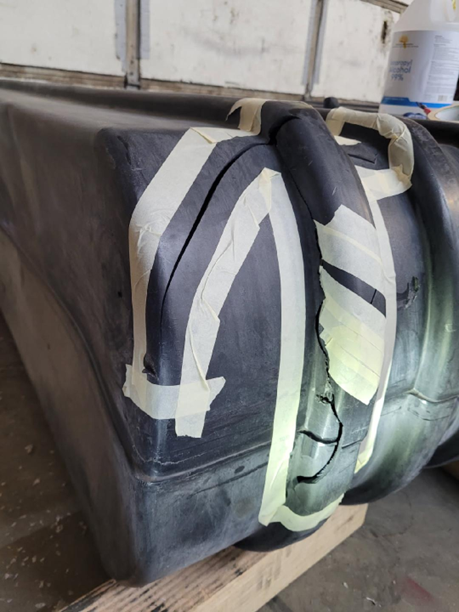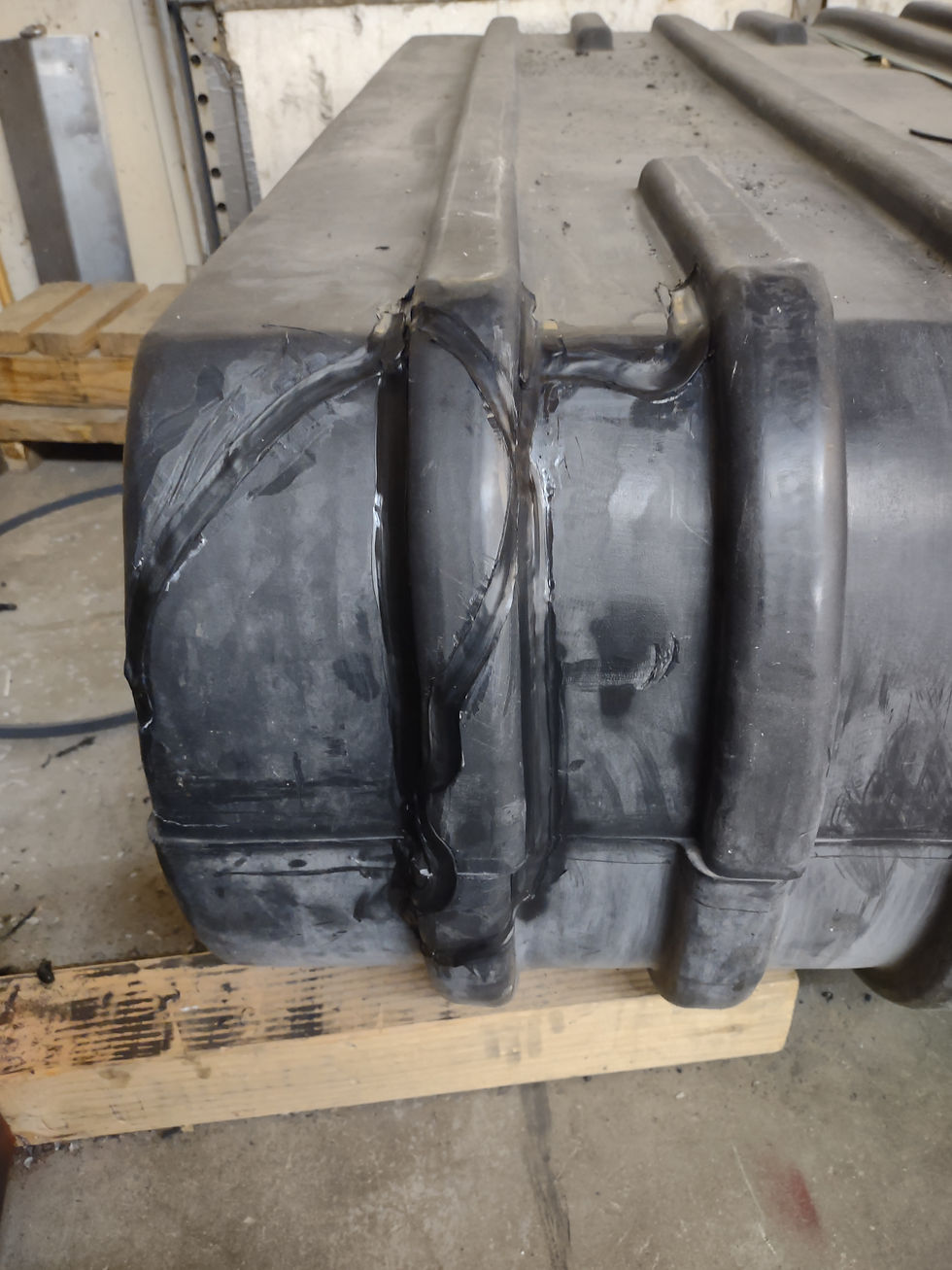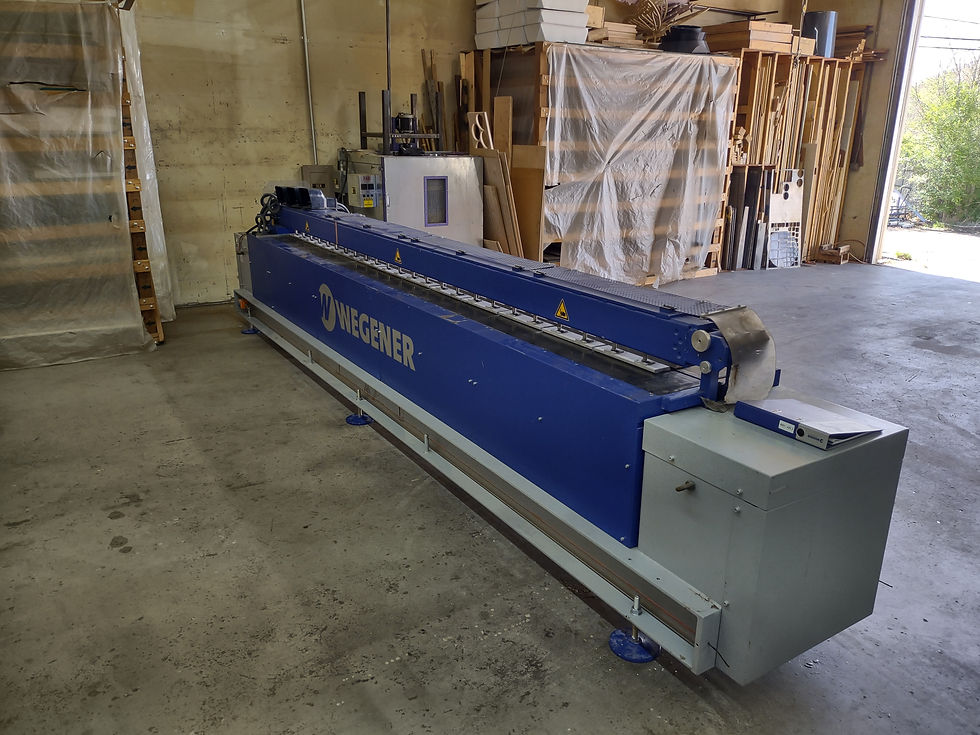Thermoplastic Plastic Tank Repair: Methods and Best Practices
- alex71632
- Jun 17, 2025
- 3 min read


Thermoplastic tanks are widely used across various industries due to their durability, chemical resistance, and ease of fabrication. However, like all materials, they can suffer damage over time. Whether it's cracked, punctured, or general wear, repairing thermoplastic tanks is essential to extend their lifespan and maintain functionality.
Commonly Repairable Thermoplastics
Certain thermoplastics offer excellent repairability due to their physical and chemical properties. These include:
High-Density Polyethylene (HDPE)(LDPE): Known for its strength and flexibility, HDPE is commonly used in storage and chemical tanks.
Polypropylene (PP): Offers high chemical resistance and is widely used in industrial applications.
Polyvinyl Chloride (PVC): A rigid and durable material often used for liquid containment.
Polyvinylidene Fluoride (PVDF): Highly resistant to chemicals and heat, making it ideal for harsh environments.
Repair Methods for Thermoplastic Tanks
Repairing thermoplastics requires techniques suited to their unique properties. Two of the most common and effective methods are extrusion welding and hot gas welding.
Extrusion Welding
Extrusion welding is one of the most effective methods for repairing thermoplastic tanks. It involves:
Surface Preparation: Cleaning the damaged area thoroughly to remove contaminants and ensuring a smooth welding surface.
Preheating: Using a heat source to warm the base material, ensuring better fusion.
Applying Weld Material: A specialized extruder feeds molten plastic into the damaged area, bonding seamlessly with the base material.
Shaping & Finishing: The welded area is shaped, trimmed, and smoothed for structural integrity.
Advantages of Extrusion Welding
Ideal for repairing large cracks or splits.
Provides a strong and durable bond.
Suitable for thick-walled components.
Hot Gas Welding
Hot gas welding, also known as hot air welding, is a versatile technique for plastic repairs. It involves:
Preparation: Cleaning the damaged area and cutting a V-groove for better penetration.
Heating: Using a specialized hot air gun to soften the base material and welding rod.
Fusion Welding: Applying pressure to fuse the welding rod with the base plastic.
Cooling & Finishing: The weld is allowed to cool naturally before trimming for a clean finish.
Advantages of Hot Gas Welding
Effective for small cracks and minor repairs.
Provides a strong mechanical bond.
Works well on a variety of thermoplastics.
Best Practices for Successful Repairs
Material Matching: Ensure the welding rod matches the base material for optimal bonding.
Cleaning: Take great care to clean all areas that will be welded, the best way to endure clean weld areas is to scrap the plastic down to virgin material.
Proper Temperature Control: Avoid overheating, which can weaken the plastic structure.
Use of Reinforcements: In cases of structural damage, reinforcement techniques such as patching can improve repair quality.
Regular Inspections: Periodic checks help prevent issues before they escalate.
Thermoplastic repair using extrusion welding and hot gas welding is an efficient and cost-effective solution to prolong the life of plastic tanks. With the right techniques and materials, industries can continue using these tanks safely and effectively for years to come.
Common Products Made from Thermoplastic Polymers
Thermoplastic polymers are widely used across industries due to their versatility, durability, and ease of processing. These materials can be molded and reshaped multiple times with heat, making them ideal for manufacturing a variety of products. Below are some common applications:
1. Automotive Components
Gas Tanks for Vehicles: Many modern fuel tanks are made from thermoplastics like HDPE due to their resistance to chemicals and impact.
Bumpers & Body Panels: Polypropylene is commonly used for lightweight yet durable automotive parts.
Interior Trim & Dashboard Components: PVC and polypropylene are extensively used for car interiors.
2. Industrial & Storage Tanks
Chemical Storage Tanks: PVDF and HDPE tanks are used for safely storing corrosive substances.
Water Storage Tanks: Polyethylene tanks are popular for residential and commercial water storage solutions.
3. Pipes & Fittings
PVC Plumbing Pipes: Widely used in residential and industrial plumbing due to their cost-effectiveness and resistance to corrosion.
HDPE Gas & Water Pipes: Known for their flexibility and strength, HDPE pipes are used in utility applications.
4. Consumer Goods
Household Containers: Polypropylene and polyethylene are common in food storage containers.
Sporting Equipment: HDPE and PVC are used in protective gear and outdoor recreational products.
Packaging Materials: Thermoplastic films and rigid containers are used in food and product packaging.
Thermoplastics continue to shape modern industries with their adaptability and reliability. Whether in vehicles, storage solutions, or everyday household items, these materials play a crucial role in manufacturing durable and efficient products.
If your thermoplastic tanks or components need expert repair, Pro Plastic Welding is here to help! As industry leaders, we specialize in extrusion welding and hot gas welding, ensuring strong, lasting repairs for HDPE, polypropylene, PVC, PVDF, and more. Our team has successfully repaired a wide range of materials and assemblies, restored functionality and extended lifespan. Contact us today, let’s get your plastic equipment back in top shape!



Comments